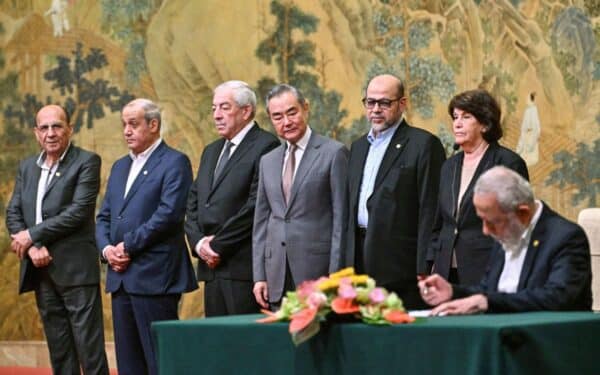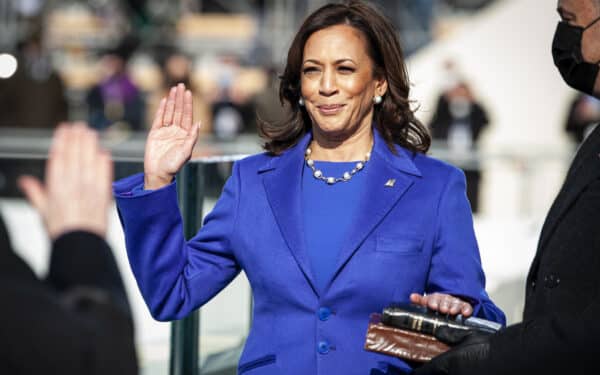Somewhere around the turn of the millennium, the “Keep Calm and Carry On” meme began to replicate. The phrase had originally appeared on Ministry of Information posters in 1939 but, rediscovered by bookseller, Stuart Manley, in 2000, it was appropriated by more commercially-minded folk in 2007, somewhat bizarrely registered as a trade mark in the EU, and subsequently found on mugs, tea towels, t-shirts, hessian bags, and pretty much any place where hip people can put inexplicably faddish words. In the context of 1939, the message had made sense. In the context of today, the message spoke about a pastiche of Britishness that was being fed directly back into the national psyche.
It’s not that the British aren’t stoically inclined to “keep calm and carry on” but, really, ours is a stoicism that’s perpetuated through our myths and fiction. If Dad’s Army was borne of real men standing up, doing their duty, and willing to die defending their homeland from an imminent threat, then subsequent generations were shaped by that fictional “Dad’s Army” more than they were shaped by actual defenders of wartime Britain. We are a stoic people because we tell ourselves that we’re stoic. You don’t need to think “what would Captain Mainwaring do?” in order to be guided by what Captain Mainwaring would do. Culture directs our actions and lies at the base of every patriotic stirring. Being “British” means more than the label. It expresses some shared values, opinions, and, indeed, psychological dependencies, such as belief in justice, democracy, and having a good (if odd) sense of humour. Deep down, we are all James Bond, Hermione Granger or Doctor Who…
In the wake of various terrorist incidents, we’ve seen similar instances of this stoic patois, such as the now infamous Underground sign after the Westminster attack. “All terrorists are politely reminded that THIS IS LONDON and whatever you do to us we will drink tea and jolly well carry on. Thank you.” The fact that there was no such sign on the London Underground and that it had been created using an online meme generator didn’t stop the message from going global, even appearing on Radio 4’s Today show, where it was read out by Nick Robinson. There was so much here — “tea”, “jolly well”, the forced politeness, as well as the now iconic urge to “carry on” — to make American news anchors a little giddy with Anglophilia. Again, the myth was more potent than the reality. It didn’t matter if the sign wasn’t real so long as the sentiment expressed was.
This kind of defiant statement has become something of a regular fixture on social media in the wake of terrorist incidents in the UK. Over the weekend, John Simpson tweeted: “Why don’t these silly plonkers see that even if they hurt a few of us, or even kill us, the rest will never ever give in? Utterly pointless.” It is a powerful sentiment and healthy too, even if we know (as one suspects John Simpson realizes) that neither “never” nor “ever” tell the whole story. This is the cruel Conradian paradox by which The Heart of Darkness’s hero, Marlow, recognises the brutal truth of reality but prefers to live with the illusion of civilization. What seems solid from a distance is actually riddled with fractures up close.
This is a truth it’s probably unhealthy to acknowledge too often. It certainly isn’t popular and is rarely voiced as explicitly as this. A few days after the Manchester bombing, I sat drinking coffee and reading the news in an eerily quiet Arndale Shopping Centre. I was struck by the various politicians and members of the public expressing their belief that terrorism would never change the way we live our lives. Just that morning, a crowd had sang “Look Back In Anger” to the outside broadcast units of the world’s network news posted in St Anne’s Square. Elsewhere, unseen by cameras, the streets were emptier than I’ve ever seen for Manchester. The contrast was striking.
That does not mean that British resolve wasn’t there but it is certainly worth reminding ourselves that it’s not always wise to take it for granted. It is a fragile illusion. The wish to remain unaffected by terrorist incidents is quite different to our immunity to change. For instance, in Malcolm Gladwell’s David & Goliath, he analyses the psychology of the Blitz Spirit and concludes that what people now see as an indefatigable determination to “Keep Calm and Carry On” was, in fact, a recognisable psychology of people who have come close to death but not so close as to be overtly traumatised. The result of enough “near misses” in a population (in this case London) are people who begin to believe they are somehow invincible. Of course, the converse might also be true: those that never experience traumatic events at close hand can become overly sensitive to them. Fear promulgates among those that probably have the least to fear.
That’s what worries me about the current obsession that successive governments have had for the National Threat Level. As terrible and tragic as terrorist incidents can be, the threat level paradoxically lends them an unreasonable level of threat, as well as undermines the culturally valuable lessons we’ve always been taught about freedom, danger, and the pragmatism of “carrying on”.
You might have personal experiences of this yourself. Just the other day, in the wake of the failed detonation of a bomb on a London tube train, I told a relative that I’d be heading into Liverpool. They winced and told me that they thought I was foolish.
“Why?” I asked. “I’m only going to the library…”
“But the threat level is at critical!” they replied.
They were not the first to make that point and I do not expect them to be the last.
Now, of course, I’m not arguing that some easy to understand coding of our preparedness level doesn’t have a use, especially inside government departments and agencies that need to anticipate terrorist incidents. What I do question is how the media and, to an extent the government, have turned the alert into a form of sensationalist infographic directed to the general public. I fail to see what’s gained by solemn voices plucked from the worst kind of future dystopia announcing everywhere that “The Threat Level is Critical” and telling us to “See it. Say It. Sort It”. There is a point at which vigilance begins to affect people’s lives, when quality of life is denuded by paranoia, when social cohesion suffers from the creeping fear of every form of “other”.
The “threat level” is a relatively new innovation, around since 2006, when the government accepted findings after the 7th July London bombings.
The Government agrees that greater transparency about the threat level and alert state system itself, and a managed process for communicating it to the public, will enhance its effectiveness and increase public confidence and vigilance.
But do you notice that this isn’t simply about vigilance but “confidence”? And the concern we should have is that the alert levels have become a political tool. That’s not to say that successive governments have wanted to keep people in a state of perpetual fear — though cynics might well be right to argue that’s the case — but, rather, the alert levels are certainly a reminder that the government is taking the threat seriously. It’s why, no doubt, we saw armed troops marching down Downing Street after the Manchester Arena bombing but, again, one questions whether it wasn’t an illusion of strength and, quite possibly, a sign of weakness. There is a danger that the Threat Level mimics the American situation in which politicians obsess over terror and ignore the real dangers of gun crime, drug abuse, or traffic accidents.
Hearing that the government has raised the threat level is the first way that terrorists can and do win. We should deprive them of even this small but symbolic victory. The rest of us, to avoid the now hackneyed meme, will simply carry on and keep calm, just like we’ve always done.



